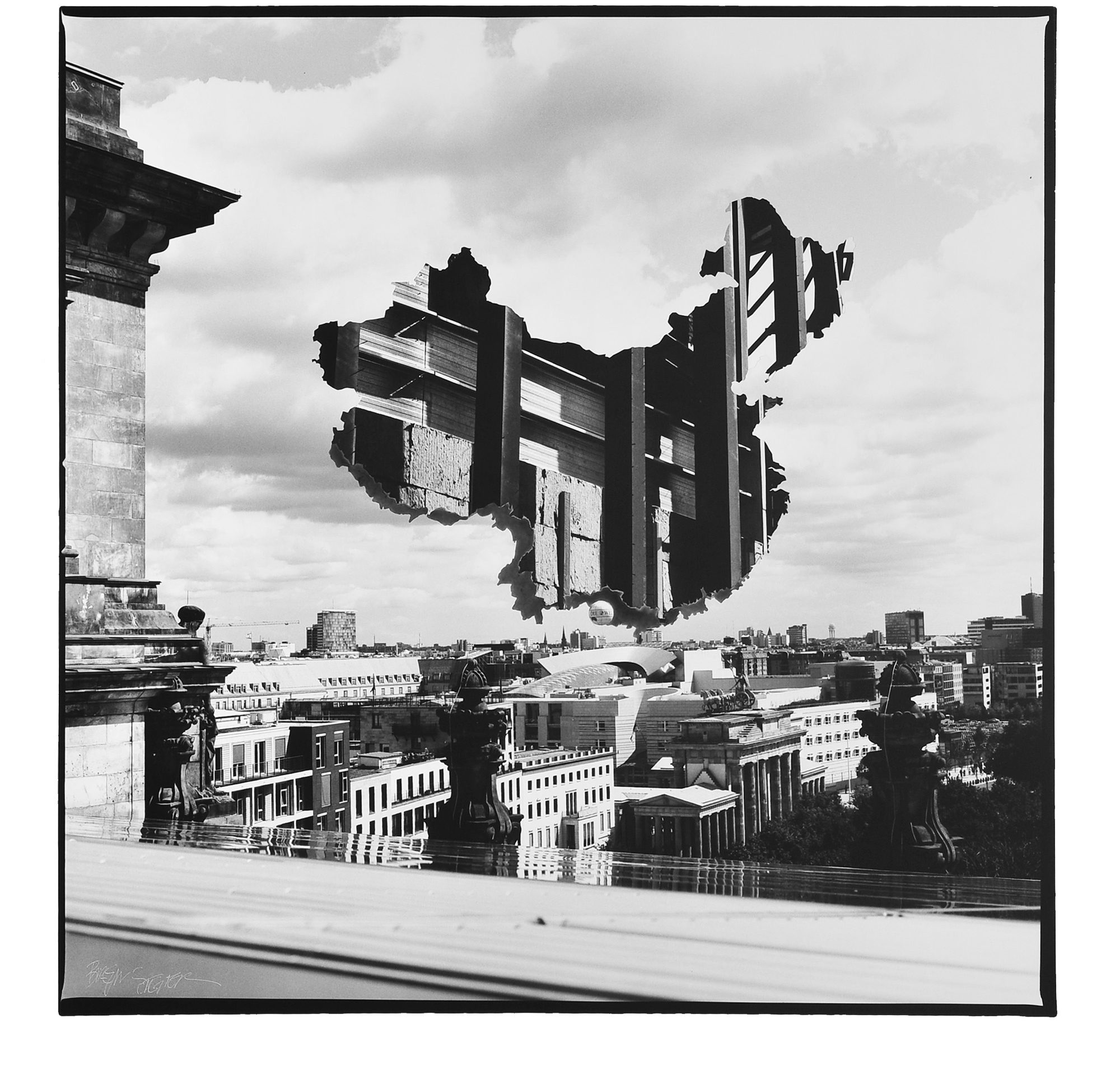Olympia Stadion Berlin
1.10 x 1.10 m
Hasselblad-Analog photography black-and-white, treated with needles
2017
Berlin is a fast-growing European metropolis, which opens its windows to the world even wider, while Berlin, being an old city, is still characterised by its continuous development.Berlin’s bustling cultural life has made the city a popular place.
Brandenburg Tor
1.20 x 1.07 m
Hasselblad-Analog photography black-and-white, treated with needles
2017
9th November 2019 exactly 30 years after the fall of the German Wall.

China over Berlin
1.20 x 1.07 m
Hasselblad-Analog photography black-and-white, treated with needles
China symbolises the unknown, its strong interest in Berlin and its bustling economy. However, little is known about China and its strategies.
China is also being depicted as a zeppelin, floating above the no man’s land between past East- and West-Berlin, namely the border at the Brandenburg Gate. The space between the high walls has become a paradise for rabbits, as none of their enemies can get access to this restricted zone.
America over Berlin
1.05 x 1.05 m
Hasselblad-Analog photography black-and-white, treated with needles
America hovers like a symbolic ear in front of the glass wall of the Reichstag. America and Germany are accusing each other of espionage.
The USA hangs in the air like a zeppelin. The foil represents the normally ultralight filling of the zeppelin. Over the shape of the US, the artist has chosen to place a photographic detail of a steel and stone construction—the image of the type of buildings that have been springing up like mushrooms throughout Berlin for years now. This reflects the enormous development, and the restlessness that accompanies it, which Berlin is experiencing.
Reichstag
1.05 x 1.05 m
Hasselblad-Analog photography black-and-white, treated with needles
The Reichstag’s thick walls are illuminated; playful connecting elements can be found on the walls.
The photo series in Berlin was created during Stigter’s bicycle rides through the city. During these rides, she came across traces from the old world and the city’s history. At the same time, she found new perspectives, possibilities and connections. That’s why Stigter decided to photograph the city; she captured Berlin mostly in black-and-white. Without ignoring the city’s past, which can be found everywhere in the subtle background details, Stigter’s photographs show us a new world with a future full of connections.
Spinal column
1.05 x 1.05 m
Hasselblad-Analog photography black-and-white, treated with needles
An open, luminous construction. The light enters from the outside and makes everything look transparent. A reflection of the clouds: the sky is moving across the dome’s glass. Visitors can walk nearly all the way to the top to enjoy the impressive view of Berlin: a flat city with few tall buildings.
Birgit Stigter has done research on Berlin’s design language, especially on the city’s lines, both natural and man-made, with their internal connections as her core interest. This dynamic city, the European centre of art and politics, has been made up of a wide variety of forms and functions for centuries now. Divided, reunited, divided and reunited once again, connections, decay and flourishing: everything leaves its traces and lays the foundations for the city and its inhabitants. The design language of these foundations is also reflected in art.
Streets at the Gendarmenmarkt
30 x 60 cm
Hasselblad-Analog photography black-and-white, treated with needles
2017
Two photographs next to each other, photographed from a slightly different angle, from the roof of Quartier 205. With a view of the roofs, the streets and the Gendarmenmarkt, as well as the Charlottenstraße, which is shown cutting through Berlin on a diagonal.
The two photographs together form a panoramic image. However, because of the different angles, the images do not look the same. The concert hall looks different: its eye-catching roof has been partially left out, so you can see the French Church behind it. On the right, you can find major Berlin icons: the TV tower, the Rotes Rathaus, and the characteristic Berlin construction cranes that never seem to leave. Berlin is an incredibly green city: it has large-scale parks with ancient trees, showing green or yellow/orange foliage depending on the season. Now the buildings are wearing the colours of Berlin’s trees.
The old buildings and trees know the city’s history.